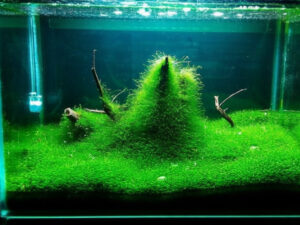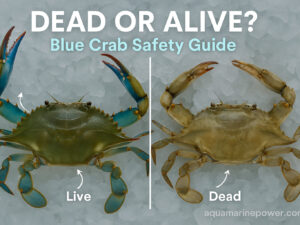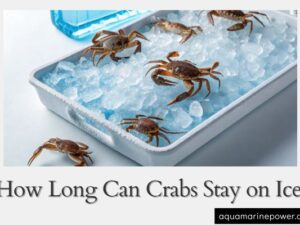Have you ever watched a dull gray lobster transform into a vibrant red masterpiece in boiling water? This dramatic color change isn't magic—it's pure chemistry. The transformation happens because heat breaks down a protein called crustacyanin, releasing the naturally red pigment astaxanthin that was hidden all along.
This fascinating phenomenon affects all crustaceans and involves complex molecular interactions discovered over 150 years ago. You'll discover the complete scientific explanation, which shellfish are affected, what this means for your cooking, and surprising connections to pink flamingos. Let's dive into one of nature's most visible chemical reactions happening right in your kitchen.
Why Shellfish Change Color?
When you cook shellfish, heat causes the crustacyanin protein to denature (unravel), releasing the red astaxanthin pigment it was holding. Think of it like unwrapping a present—the red color was always there, just hidden by the protein wrapping. This process typically occurs at temperatures above 140°F (60°C).
The transformation is instant and irreversible, making it a reliable indicator of cooking progress. Here's a simple comparison:
| State | Shell Color | Protein Status | Pigment Status |
|---|---|---|---|
| Raw/Alive | Gray/Blue-Green/Brown | Crustacyanin intact | Astaxanthin bound (hidden) |
| Cooked | Bright Red/Orange | Crustacyanin denatured | Astaxanthin free (visible) |
The Science Behind the Color Change
What Is Astaxanthin?
Astaxanthin is a carotenoid pigment—the same family of compounds that makes carrots orange and tomatoes red. This powerful antioxidant originates in marine algae and works its way up the food chain as shellfish consume algae-eating organisms. The pigment naturally appears red because it absorbs blue light wavelengths.
You might recognize astaxanthin's effects in other animals too. It's responsible for salmon's pink flesh and gives certain aquarium shrimp their vibrant colors. The pigment is so effective that it's now produced synthetically for use in fish farming and dietary supplements.
Understanding Crustacyanin Protein
Crustacyanin is a complex protein that acts like a molecular disguise for astaxanthin. When this protein binds to the red pigment, it literally twists the molecule, changing how it interacts with light. Instead of appearing red, the twisted complex reflects blue-green wavelengths.
Michele Cianci, a biochemist at Marche Polytechnic University, explains it perfectly: "imagine holding a rubber band in your hands. You can impose any kind of configuration you want." Just as you can stretch and twist a rubber band, crustacyanin twists astaxanthin into a different shape. Release the rubber band, and it snaps back to its original form—just like astaxanthin returning to red when cooking releases it from crustacyanin's grip.
How Heat Triggers the Transformation?
The cooking process initiates a cascade of molecular changes that reveal why crustaceans turn red. When temperatures rise above 140°F, the heat energy causes crustacyanin molecules to vibrate intensely. This vibration breaks the delicate bonds holding the protein in its specific shape.
As the protein unravels, it can no longer maintain its grip on astaxanthin. The pigment molecules spring back to their natural configuration, immediately displaying their true red color. This process, called denaturation, is the same reaction that turns egg whites from clear to white when cooked.
The transformation happens in seconds and provides a visual cue that's been helping cooks for centuries. Understanding this process helps explain why lobster shells turning red is such a reliable cooking indicator.
Which Shellfish Turn Red When Cooked?
Crustaceans That Change Color
The color-changing phenomenon affects all crustaceans with exoskeletons containing astaxanthin. Each species displays slightly different shades and intensities based on their astaxanthin concentration and shell structure.
Common Color-Changing Shellfish:
- Lobsters: Transform from blue-green to bright red
- Blue Crabs: Change from blue-gray to orange-red
- King Crabs: Shift from brownish to deep red
- Shrimp/Prawns: Turn from gray/translucent to pink/red
- Crayfish: Convert from brown/green to bright red
- Snow Crabs: Change from tan to orange-red
Different species contain varying amounts of astaxanthin, explaining why some turn deeper red than others. Ghost shrimp, for example, have less pigment and turn a lighter pink compared to their cousins.
Why Some Don't Change Color?
Not all shellfish follow the red transformation rule. An estimated 1 in 100 million lobsters are albino and don't have any pigments in their shell. These rare creatures lack astaxanthin entirely and remain ghostly white even after cooking.
Pre-cooked shellfish won't change color again because the transformation already occurred. Additionally, mollusks like clams, oysters, and mussels don't turn red because they lack the astaxanthin-crustacyanin complex found in crustaceans. Their shells are composed of different proteins and minerals that don't undergo the same heat-induced changes.
The Evolutionary Advantage of Color-Changing Shells
Natural Camouflage Benefits
The dull coloration of living shellfish serves a critical survival function. Lobsters live in rocky or muddy areas and rely on a specialized blue pigment to blend into their environment and avoid the gaze of cod, haddock and other fish that enjoy lobster dinners. This camouflage is so effective that predators often swim right past well-hidden crustaceans.
Bottom-dwelling crustaceans face threats from above and need every advantage to survive. Their muted colors match the ocean floor perfectly, whether it's sandy, rocky, or covered in seaweed. Species living in different habitats have evolved slightly different shell colors to match their specific environments.
Regional variations are particularly striking—crustaceans in tropical waters often display more vibrant patterns than their cold-water cousins. This diversity shows how evolution fine-tunes camouflage to local conditions.
Why Keep Red Pigment at All?
If camouflage is so important, why do crustaceans maintain the red astaxanthin that could blow their cover? Scientists have proposed several theories for this seemingly contradictory trait. The leading hypothesis suggests astaxanthin serves as a natural defense against parasites and harmful microorganisms.
It's theorized that it discourages barnacles and other parasitic organisms from attaching themselves to crabs, or other shellfish. The antioxidant properties of astaxanthin may also protect shellfish from cellular damage caused by UV radiation in shallow waters. Some researchers believe it's simply a vestigial trait—a evolutionary leftover that causes no harm when hidden by crustacyanin.
Cooking Implications: What the Color Tells You?
Using Color as a Doneness Indicator
The degree of redness directly correlates with cooking completeness, making shellfish turning red after cooking one of nature's best kitchen timers. In fact, the degree of colour change tells you if the seafood is properly cooked. If it's not red enough, it's probably not cooked enough. This visual cue has guided seafood preparation for generations.
Different shellfish require different cooking times to achieve full color transformation:
| Shellfish Type | Color Change Time | Internal Temp |
|---|---|---|
| Small Shrimp | 2-3 minutes | 145°F |
| Large Prawns | 3-5 minutes | 145°F |
| Lobster Tail | 5-8 minutes | 140°F |
| Whole Crab | 8-10 minutes | 145°F |
| King Crab Legs | 4-6 minutes | 145°F |
Watch for uniform color change across the entire shell. Patchy coloration indicates uneven cooking.
Temperature and Cooking Methods
Different cooking methods affect how quickly and evenly the color change occurs. Boiling and steaming provide the most uniform heat distribution, resulting in consistent color transformation. These wet-heat methods are ideal for whole lobsters and crabs.
Grilling creates more intense localized heat, causing faster color changes on exposed surfaces. This can lead to beautifully charred red shells with succulent meat inside. Baking offers gentle, even heating perfect for delicate shrimp species and pre-cracked crab legs.
Pro Tip: For perfect results, bring shellfish to room temperature before cooking. Cold shellfish straight from the refrigerator may cook unevenly, showing inconsistent color changes. Aim for internal temperatures of 140-145°F for optimal texture and safety.
Beyond the Kitchen: Other Astaxanthin Facts
Flamingos and the Digestion Connection
Flamingos are pink because they eat prawns. The crustacyanin protein dissolves inside the acids and fats in the flamingo's stomach, turning its feathers pinkish. This natural process demonstrates that heat isn't the only way to release astaxanthin from its protein prison. The powerful digestive acids in flamingo stomachs achieve the same molecular separation that cooking does in your kitchen.
Baby flamingos are born gray and develop their signature pink color over months of eating astaxanthin-rich food. The intensity of their color directly reflects their diet quality and health status. Zoos must carefully supplement flamingo diets with astaxanthin to maintain their vibrant appearance.
Commercial and Nutritional Applications
The discovery of astaxanthin's properties has revolutionized aquaculture and nutrition industries. It is produced synthetically for commercial use in animal and fish foods (in tiny quantities) to impart colour on those that eat it. Farm-raised salmon receive astaxanthin supplements to achieve the pink color consumers expect.
Beyond aesthetics, astaxanthin offers powerful health benefits as one of nature's strongest antioxidants. It's now available in dietary supplements, skincare products, and functional foods. Research suggests it may support eye health, reduce inflammation, and protect against UV damage.
The global astaxanthin market exceeds $1 billion annually, driven by both aquaculture and human nutrition applications. This demonstrates how understanding why lobsters turn red has led to practical applications far beyond the kitchen.
Common Myths and Misconceptions
Many misconceptions surround the color transformation of shellfish. Let's separate fact from fiction with scientific evidence:
| Myth | Reality |
|---|---|
| Only expensive shellfish turn red | All crustaceans with astaxanthin change color, regardless of price |
| Red color indicates freshness | Color change only indicates heat exposure, not freshness |
| The redder, the better tasting | Color intensity doesn't affect flavor—only cooking time does |
| Some species naturally stay gray when cooked | Only albino specimens (1 in 100 million) don't turn red |
| Frozen shellfish won't turn red properly | Freezing doesn't affect the astaxanthin-crustacyanin complex |
Understanding these facts helps you make better seafood choices. Don't judge quality by color intensity—judge by freshness indicators like smell, texture, and source.
Frequently Asked Questions
Do All Crustaceans Turn Red When Cooked?
Yes, all crustaceans containing astaxanthin turn some shade of red when cooked. The intensity varies by species—lobster shrimp red after cooking might appear bright orange, while certain crab species turn deep crimson. Only rare albino specimens lacking pigment remain white.
Can You Eat Shellfish That Don't Turn Red?
Absolutely. Shellfish that don't change color are safe to eat if properly cooked to 145°F internal temperature. Pre-cooked frozen shellfish won't change color again but are perfectly safe. Use a thermometer rather than color as your primary safety guide.
Why Are Some Lobsters Already Red When Alive?
Rare genetic mutations can cause lobsters to display unusual colors while alive, including red, blue, yellow, or calico patterns. These mutations affect how crustacyanin binds to astaxanthin. Crustaceans farther south come in a variety of vibrant colors. These colorful variants are prized by aquariums but taste identical to their gray cousins.
Does the Color Change Affect Nutritional Value?
The color transformation doesn't significantly impact nutritional content. The astaxanthin remains present and bioavailable whether bound to crustacyanin or free. In fact, research shows that cooking may slightly increase astaxanthin absorption by breaking down cell walls.
How Long Does It Take for Shellfish to Turn Red?
Color change timing depends on size, cooking method, and starting temperature. Small shrimp turn pink within 2-3 minutes in boiling water. Large lobsters may take 15-20 minutes for complete color transformation. The change begins immediately when shell temperature exceeds 140°F.
Conclusion
The transformation of gray shellfish into red culinary jewels showcases nature's elegant chemistry in action. Heat denatures crustacyanin protein, releasing hidden astaxanthin pigment—a simple reaction with spectacular visual results. This reliable color change has guided seafood cooking for centuries, turning molecular science into practical kitchen wisdom.
Next time you prepare shellfish, take a moment to appreciate this remarkable transformation. You're not just cooking dinner; you're conducting a chemistry experiment perfected over millions of years of evolution. Watch closely as those first hints of pink appear, knowing you now understand the fascinating science behind why crabs turn red and all crustaceans share this colorful secret.
Whether you're boiling lobster or grilling shrimp, use this knowledge to achieve perfectly cooked seafood every time. The color doesn't lie—when shellfish turn red after cooking, they're ready to enjoy.



